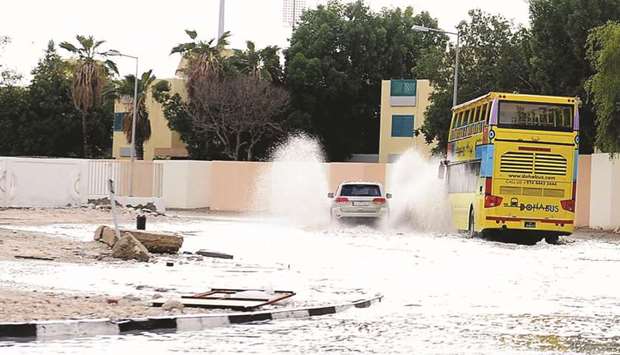Ashghal underlined that it would continue to implement a number of projects to find permanent solutions to absorb rainwater. The projects are expected to be completed in the next few years.
In the past two weeks, Ashghal has built more ponds to collect larger amounts of rainwater, after the Ministry of Municipality and Environment (MME) and Qatar Foundation provided lands to dig these ponds. The authority also increased the number of turbines and pumps responsible for rainwater withdrawal to more than 500, in order to accelerate the withdrawal of rainwater and reduce its collection in different areas.
Ashghal noted that the short-term plans it has developed in this context include works that have been completed recently and others that will be finished within a week. These plans include increasing the number of pumps and maintaining them, as well as increasing the number of ponds to discharge larger amounts of rainwater and reduce its collection in a number of areas. Pumps have been distributed in the vicinity of schools that had witnessed rainwater accumulation in the past, in order to ensure the safety of students, parents and staff of schools.
The authority added that it has put in place plans for another three to six months in preparation for the next rainy season. The plans will focus on areas with limited drainage networks or lack of rainwater drainage networks so far.
Ashghal identified the most vulnerable points for rainwater pools based on reports of the past few years, and developed interim plans to absorb rainwater in those areas until the completion of a permanent drainage network. The interim plans proved their success during the current season in the absorption of rainwater, it noted.
The mentioned solutions will remain temporary until completion of the implementation of the Mesaimeer tunnel for the discharge of surface water (rainwater) and groundwater, which is expected to be completed by the end of 2021. The tunnel will link existing and future drainage networks in the areas it passes through.
The tunnel is expected to absorb surface water from different locations, estimated at 170sq km, which will reduce rainwater collection, particularly in various tunnels. The Mesaimeer tunnel is connected to rainwater drainage networks in 22 tunnels.
Ashghal also noted the ongoing integrated infrastructure projects, which will cover all parts of the country, will need to be completed between five and 10 years and constitute permanent solutions for rainwater drainage in Qatar.
In this context, the authority noted the recent award of integrated infrastructure projects in Al Ebb and Leabaib in addition to three projects in Muaither and Al Mearad, which will enjoy a complete network in the future. Further, Ashghal said next year will see the launch of eight projects, some of which are under construction, including two projects in Al Ebb and Leabaib, two projects in Al Kharaitiyat and three projects in Al Wukair, which will serve 5,000 housing units in the country.
The authority said it works during the rainy season in co-ordination with its partners at the MME, National Control Centre and the Civil Aviation Authority, focusing on priorities such as the safe management and operation of the main treatment plants, pumping stations and drainage networks at the State level in order to avoid any flooding during heavy rainfall, in addition to ensuring that water does not accumulate on main roads and bridges and in tunnels, and ensuring the smooth flow of traffic.
Ashghal said it will continue the monitoring of all road and drainage networks in the country round the clock through the deployment of technical staff to vital sites in the country. –QNA



